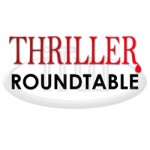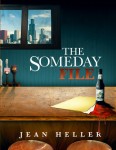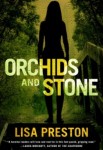

May 23 – 29: “What is the best clue you’ve inserted into a novel?”
 Clues foreshadow how plots unfold and characters react. This week we ask ITW Members Susana Calkins, Jean Heller, Jean Harrington and Lisa Preston what is the best clue you’ve inserted into a novel?
Clues foreshadow how plots unfold and characters react. This week we ask ITW Members Susana Calkins, Jean Heller, Jean Harrington and Lisa Preston what is the best clue you’ve inserted into a novel?
~~~~~
 Most of Jean Heller’s career was as an investigative and projects reporter and editor in New York City, Washington, D.C. and St. Petersburg Florida. Her career as a novelist began in the 1990s with the publication of the thrillers, Maximum Impact and Handyman by St. Martin’s Press. Then life intervened and postponed her new book, The Someday File, to publication in late 2014. Jean has won the Worth Bingham Prize, the Polk Award, and is an eight-time Pulitzer Prize nominee.
Most of Jean Heller’s career was as an investigative and projects reporter and editor in New York City, Washington, D.C. and St. Petersburg Florida. Her career as a novelist began in the 1990s with the publication of the thrillers, Maximum Impact and Handyman by St. Martin’s Press. Then life intervened and postponed her new book, The Someday File, to publication in late 2014. Jean has won the Worth Bingham Prize, the Polk Award, and is an eight-time Pulitzer Prize nominee.
 Susanna Calkins writes the Lucy Campion mysteries, set in 17th century England. Her books have been nominated for several awards; her third—The Masque of a Murderer (Minotaur Books, 2015)—was shortlisted for the Mary Higgins Clark Award, the Agatha for Best Historical Mystery, and the Bruce Alexander Historical Mystery Award. Her fourth book—A Death Along the River Fleet—was released April 12, 2016. Born and raised in Philadelphia, she lives outside Chicago now with her husband and two sons.
Susanna Calkins writes the Lucy Campion mysteries, set in 17th century England. Her books have been nominated for several awards; her third—The Masque of a Murderer (Minotaur Books, 2015)—was shortlisted for the Mary Higgins Clark Award, the Agatha for Best Historical Mystery, and the Bruce Alexander Historical Mystery Award. Her fourth book—A Death Along the River Fleet—was released April 12, 2016. Born and raised in Philadelphia, she lives outside Chicago now with her husband and two sons.
 Lisa Preston turned to writing after careers as a fire department paramedic and a city police officer. Experience in her earlier professions enhance the medical and legal passages of her fiction and non-fiction. Her debut novel, Orchids and Stone, was released by Thomas & Mercer in April 2016, and has been described both as a thriller and as domestic noir. Her published work includes non-fiction books and articles on animals, particularly the care and training of dogs and horses. Away from her desk, she spends hours on backcountry trails as a runner and rider, sometimes combining her two outdoor pursuits via the obscure sport of Ride and Tie.
Lisa Preston turned to writing after careers as a fire department paramedic and a city police officer. Experience in her earlier professions enhance the medical and legal passages of her fiction and non-fiction. Her debut novel, Orchids and Stone, was released by Thomas & Mercer in April 2016, and has been described both as a thriller and as domestic noir. Her published work includes non-fiction books and articles on animals, particularly the care and training of dogs and horses. Away from her desk, she spends hours on backcountry trails as a runner and rider, sometimes combining her two outdoor pursuits via the obscure sport of Ride and Tie.
 Jean Harrington swears she ingested ink as an infant, for words are in her blood. Her first job was writing advertising copy for Reed & Barton, Silversmiths, and Jean claims she has the spoons to prove it. Then for 17 years, she taught English literature at Becker College in Worcester, Massachusetts. After moving to Naples, she began dreaming of murder—and the award winning Murders by Design Mystery Series is the result. Currently working on a new series, Jean is up to her knees in dead bodies and loving every minute of it.
Jean Harrington swears she ingested ink as an infant, for words are in her blood. Her first job was writing advertising copy for Reed & Barton, Silversmiths, and Jean claims she has the spoons to prove it. Then for 17 years, she taught English literature at Becker College in Worcester, Massachusetts. After moving to Naples, she began dreaming of murder—and the award winning Murders by Design Mystery Series is the result. Currently working on a new series, Jean is up to her knees in dead bodies and loving every minute of it.
- LAST GIRL MISSING with K.L. Murphy - July 25, 2024
- CHILD OF DUST with Yigal Zur - July 25, 2024
- THE RAVENWOOD CONSPIRACY with Michael Siverling - July 19, 2024
